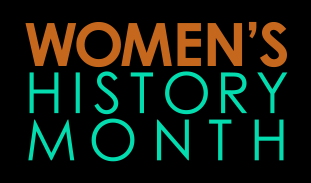National Women’s History Month traces its roots to March 8, 1857, when women from various New York City factories staged a protest over poor working conditions. The first Women’s Day celebration in the United States was in 1909, also in New York City. In 1981 Congress established National Women’s History Week to be commemorated annually the second week of March. Between 1988 and 1994, Congress passed resolutions requesting and authorizing the president to proclaim March of each year as Women’s History Month. Since 1995, presidents have issued a series of annual proclamations designating March as Women’s History Month. Many federal agencies celebrate and recognize the importance of Women’s History month.
As Women’s History Month is celebrated in 2021, many will reflect upon advances women have made over the last decade. Women have increased their earnings, education and fields of occupation and have continued to live longer than men. View stats from Census Bureau surveys highlighting how women’s employment has changed over the years here.
The Library of Congress, National Archives and Records Administration, National Endowment for the Humanities, National Gallery of Art, National Park Services, Smithsonian Institution and the United States Holocaust Memorial Museum join in commemorating and encouraging the study, observance and celebration of the vital role of women in American history.
The Agriculture Department has a Women in Agriculture Mentoring Network where women can connect, share stories and share experiences with fellow women in agriculture. The goal is to promote the image, role and leadership of women, not only on the farm, but in youth organizations; at cutting edge research facilities at universities across the country; and in the boardrooms of global corporations.
In celebration of International Women’s Day, Secretary of the Treasury Janet Yellen, and IMF Managing Director Kristalina Georgieva had a conservation which they called “The Age of Womenomics.” They discussed gender inclusion, especially in economics and finance, their respective career journeys, challenges and role models and the impact of this current COVID-19 economic crisis on women.
The U.S. Secretary of State recognizes women from around the globe who have demonstrated exceptional courage and leadership in advocating for peace, justice, human rights, gender equality and women’s empowerment, often at great personal risk and sacrifice with the Women of Courage Award. Learn more about the 2021 honorees here.
This blog post was written by Marcia Caudell, supervisor of the Reference and Government Services Division at the Indiana State Library.


